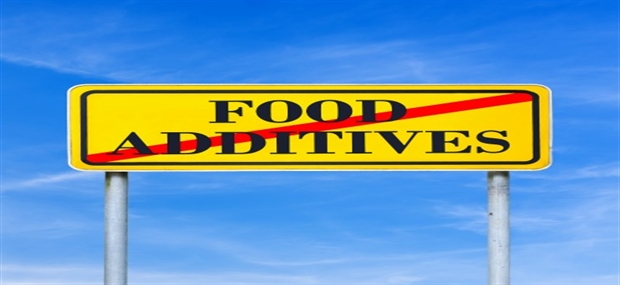| Typical foods found in: |
Chemical’s Names: |
Potential Health Effects? |
| Meat products |
Chemicals found in Meat Products:
- Hormonal growth promotants – used to enhance meat production (growth) in livestock – linked to cancers
- The use of antibiotics in animals – linked to antibiotic resistance in humans
- Manufacturers – add color-fixer chemicals, such as Sodium Nitrate, to preserve meats and also to keep the red color of the meat — without this, the meat would turn grey, which would obviously keep consumers from buying it.
|
| Food, water, even lipsticks |
Heavy metals |
Severe anemia, permanent brain damage, Alzheimer’s Disease,dementia, neurological disorders, reproductive problems, diminished intelligence, impaired immune system, behavioral disorders, as well as death. Click here for more info. |
| Flavor enhancer of tomatoes, aged cheese and mushrooms. Found in a seaweed sauce. Added to frozen and canned foods to cover any unpleasant tastes. |
Glutamic acid, most commonly found in the form monosodium glutamate (MSG) |
If there is a high level of glutamates in the bloodstream, glutamate can enter the brain and cause the neurons to misfire, causing physical and psychological problems, and in extreme cases, permanent damage.There is evidence that behavioral problems in children previously thought to have attention deficit hyperactivity disorder or emotional problems might be caused at least in part by the glutamates in their diet. There have been numerous cases of children thought to be “problem” children undergoing a remarkable change when MSG is eliminated from their diet. |
| Cola and non cola soft drinks, flavored mineral waters, fruit juice, fruit drinks |
Benzene (Preservative) |
Benzene can be formed in beverages that contain both ascorbic acid (vitamin C) and sodium benzoate (a preservative). The reaction between the ascorbic acid and sodium benzoate in beverages can create benzene. |
| Deserts, bakery goods, beverages |
Artificial & Questionable “Natural” Sweeteners |
Linked to cancers, hyperactivity /ADHD / learning disability – Click here for info |
| Decaffeinated Coffee |
methylene chloride – a solvent that is used to remove caffeine from coffee. This process leaves this chemical in the coffee. |
Proven carcinogenic that is toxic to lungs, the nervous system, liver, mucous membranes, central nervous system (CNS). Repeated or prolonged exposure to the substance can produce target organs damage. |
| Sodas, sweets, jams, cereals, snack foods, canned fish, packaged soups |
Tartrazine aka FD&C Yellow No:5; CI Acid Yellow 23, CI Food Yellow 4. Coal tar dye. Polycyclic Aromatic Hydrocarbon.* artificial color – Banned in Norway, Austria and Finland. Restricted use in Sweden and Germany. |
Cancer probability. Known to provoke asthma attacks (though not recognized by the US FDA) and urticaria (nettle rash) in children (the US FDA estimates 1:10 000). May cause altered states of perception and behavior, uncontrolled hyper agitation and confusion; wakefulness in young children. Is also known to inhibit zinc metabolism and interfere with digestive enzymes. |
| Soft drinks |
Yellow 2G, Acid yellow 17, CI Food yellow 5, Coal tar dye* artificial color – Banned in Australia (1992), Austria, Belgium, Denmark, France, Germany, Japan, Norway, Sweden, Switzerland, and USA. |
May cause asthma, rashes and hyperactivity |
| Cereals, bakery, sweets, snack foods, ice cream / lollies, drinks and canned fish, orange squash, jelly, jam, cakes, soups, desert mixes, yogurt, sauces |
Sunset Yellow FCF, Orange Yellow S, FD&C Yellow No:6, CI Food yellow 3* artificial color – * Banned in Finland, Norway and the UK. |
Can provoke allergic reactions such as abdominal pain, hyperactivity, hives, nasal congestion, bronchoconstriction, kidney tumours, chromosomal damage, and distaste for food. It produces urticaria, swelling of the blood vessels, gastric upset. Potentially dangerous to asthmatics |
| Sweets, cakes, biscuits, drinks, condiments, medications |
FD&C Red No:40* artificial orange-red color |
Has been connected with cancer. |
| Milk deserts, sweets, biscuits, ice creams, baked goods, confectionery |
Indigotine, Indigo carmine, FD&C Blue No:2, synthetic coal tar dye.* artificial color – Banned in Norway. |
May cause nausea, vomiting, high blood pressure, skin rashes, breathing problems, brain tumors and other allergic reactions. |
| Dairy products, sweets and drinks |
Brilliant blue FCF, FD&C Blue Dye No:1, CI Acid blue 9, CI Food blue 2, CI Pigment blue 24* artificial color – Banned in Austria, Belgium, France, Germany, Norway Switzerland, Sweden. |
Can cause hyperactivity, skin rashes, bronchoconstriction (combined with 127 and 132), chromosomal damage. |
| Sulphured dried fruit, fruit drinks, wine, meat, and as a processing aid to control physical properties of flour |
Sulphur dioxide (SO2) – a preservative used in gaseous form or as salts (sulfates); also prevents enzymatic and non-enzymic browning. This additive is unsafe or very poorly tested |
Protects vitamin C, but destroys vitamin B1. Small amounts may cause asthma and anaphylactic shock. Dangerous for asthma, allergy sufferers,Has resulted in deaths. Banned on fresh fruits and vegetables.” The main danger of sulphur dioxide as someone mentioned earlier is for those who are sensitive or allergic to sulfites. |
| Sugar-coated flour confectionery, silver coated tablets. |
Aluminum |
There is evidence that aluminum accumulation in body cells could be toxic and linked to Parkinson-type diseases, or that skeletal deformations could occur. Suspect of being a neuron-toxic hazard and been linked to osteoporosis. |








